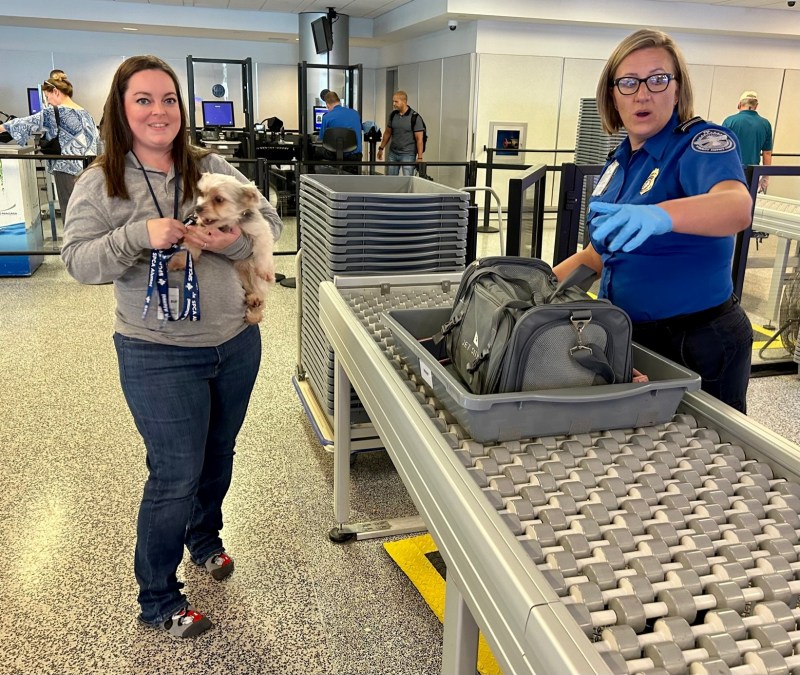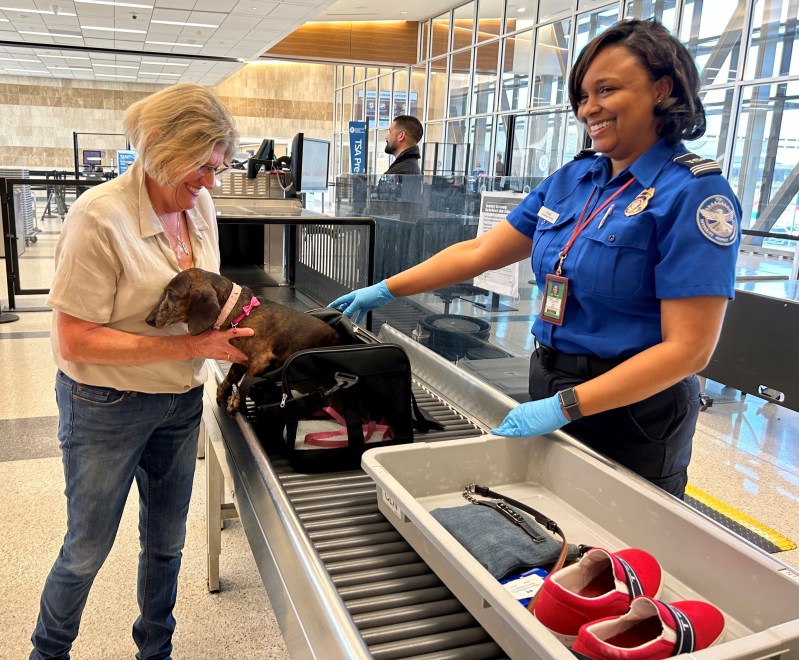
We have all made mistakes when trying to get through airport security when flying. Maybe you accidentally packed the full-sized bottle of shampoo instead of the travel size and have had to toss it at airport security. It happens. But the TSA has seen a certain mistake made too many times when it comes to people getting through airport security with their fur babies. They want you to take a minute to make sure this major mishap doesn’t happen when traveling with a pet.

Get your pet through security the right way, according to the TSA
Once you are in the security line at the airport, this is what the TSA wants those traveling with a pet to know.
Getting through the actual checkpoint tunnel
- Your pet needs to be in a carrier while going through the security checkpoint until you go through the metal detector.
- Here’s the big reveal: Your pet should never stay in the carrier and go through the X-ray tunnel. Take your pet out. Your pet and pet carrier should be in two different spots going through two different security points.
- The pet carrier gets sent through the X-ray tunnel, and your pet goes through the metal detector with you.
If you have sent your precious pet in the X-ray tunnel before, remain calm, and just don’t do it again. After you take off your shoes and check for things in your pockets that might set off the alarm, get your pet ready.
If you are flying with a dog, have their leash handy to walk them through security. You are allowed to walk any approved pet through if you can put a leash on them. If you have a cat that might bolt, hold them like the precious baby they are and carry them through.
Once you are through and TSA has checked your hands for dangerous residue, put your fluffy bestie back in their carrier when you’ve reached the re-composure area.

The basic flying rules for your pet
You should also know these other rules and guidelines for flying with a dog (or other pet). Before you buy your fluffy buddy a plane ticket, you should call the airport to ask about their pet policies.
Before you leave for the airport
- Every airport and airline has different guidelines for pets.
- Those guidelines could change from season to season, so ask no matter what time of year you travel.
Before your pet travels
- If your pet isn’t used to traveling, get them comfy with their carrier before you leave. This could take days or weeks, depending on the temperament of your furry child.
- If you know they won’t do well with new lights, sounds, and smells, request a private screening room for the TSA agent to check your pet.
At the airport
- Know where the pet relief areas are located because they are different at every airport.
- If you see a lane has an airport security dog on duty, find another so no animals get distracted or overwhelmed.
While it’s not a complex system to travel with a pet and get through airport security, your friends at the TSA would like to stop seeing those poor animals pop up in the X-ray machines.



